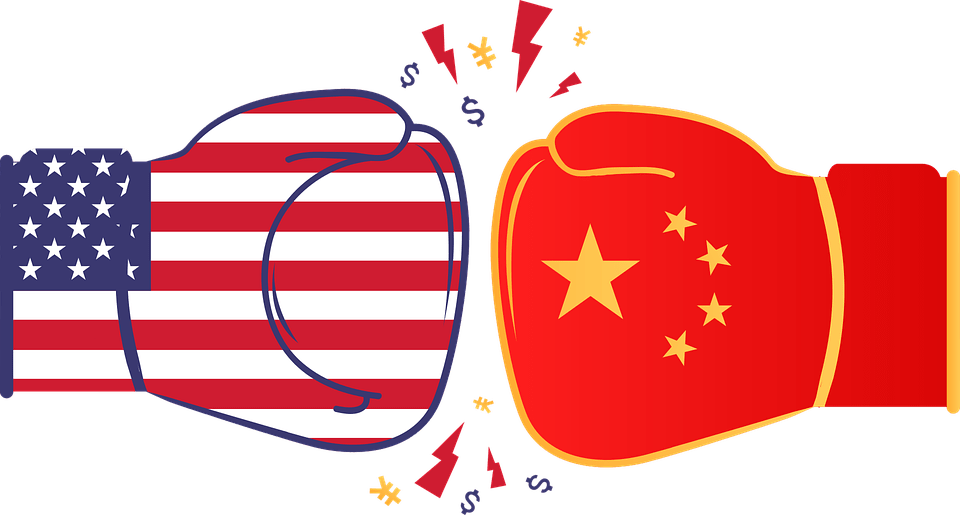The WTO highlighted the most relevant parts of the Economic and Trade Agreement, Phase 1, between China and the United States.
The following are excerpts from a WTO report.
In general, the Phase contains specific provisions in relation to:
- Protection of trade secrets.
- Strengthening of the Intellectual Property (IP) of pharmaceutical products.
- Adjustment and extension of the validity of patents.
- Prevention of piracy and counterfeiting on e-commerce platforms.
- Promotion of transparency in the protection of geographical indications.
- Prevention of the manufacture and export of counterfeit goods.
- Guarantee of adequate and effective protection and enforcement of trademark rights, in particular against the registration of these trademarks carried out in bad faith.
- Increased bilateral cooperation on IP protection.
Phase 1
This partial agreement contains provisions regarding trademark registrations made in bad faith; With a view to strengthening the protection of trademarks, both Parties shall ensure adequate and effective protection and enforcement of trademark rights, in particular against registrations made in bad faith.
The Agreement also contains provisions on geographical indications.
In particular, it provides that:
- Relevant factors are taken into account when determining the generic nature of a term, such as its use in dictionaries, newspapers and websites; the way in which the product designated by a term is marketed and used in business relationships; and if the term is used in the relevant standards:
- Geographical indication protection is not granted to individual components of terms that consist of multiple components when the individual component is generic.
- Individual unprotected components are publicly identified when GI protection is granted to terms consisting of multiple components.
In 2020, the National Intellectual Property Administration of China (CNIPA) published the Guidelines for the Determination of Common Names within the framework of the Protection of Geographical Indications (Draft), which specified the determining factors, the conditions for cancellation and other aspects related to common names for the purpose of determining their generic nature within the framework of the protection of geographical indications.
Pharmaceutical products
In addition, the Phase 1 Agreement contains provisions regarding the extension of the duration of patents to compensate for excessive delays in the patent office and the commercialization approval process, which reduced the effective duration of patents, and allows the use of complementary data for compliance with the relevant patentability criteria in the case of patent applications for pharmaceutical products.
It also establishes a mechanism for the prompt resolution of possible differences in the matter of patents of pharmaceutical products, which includes a cause of action that allows patent holders to request agile remedies before the commercialization of an allegedly infringing product.
Accordingly, China has taken steps to implement the early dispute settlement mechanism for patents on pharmaceuticals in accordance with the provisions of the Agreement and the relevant provisions of the Patent Law.
The measures were published on September 11, 2020 for the purpose of gathering comments and were revised based on the comments made by national and foreign interlocutors.
Guidelines
Articles 42 and 76 of the fourth revision of the Patent Law address the «Effective extension of the duration of the patent» and the «Effective mechanism for the prompt settlement of disputes in patent matters», provided for in the Economic Agreement and Commercial, Phase 1, between China and the United States.
A decision regarding the revision of the Patent Law was made at the 22nd meeting of the Standing Committee of the National People’s Congress, and the revised Patent Law is expected to enter into force on June 1, 2021.
In addition, on December 14, 2020, the CNIPA published Announcement No. 391 amending the Guidelines for the Examination of Patents, which entered into force on January 15, 2021. According to the authorities, this document provides more details about the standard of examination for the submission of experimental data after the application deadline.
Trade secrets
Pursuant to the Economic and Trade Agreement, Phase 1, between China and the United States, China has incorporated other prohibited acts that constitute misappropriation of trade secrets, in particular:
- Electronic intrusions.
- Non-compliance or instigation of non-compliance with the duty not to disclose information of a secret nature or that is intended to be kept secret.
- Unauthorized disclosure or use of a trade secret after obtaining it in circumstances that give rise to a duty to protect it from disclosure or limit its use.
In addition, the Agreement provides for shifting the burden of proof to the accused party in civil misappropriation proceedings when the owner of a trade secret has submitted prima facie evidence, including circumstantial evidence, that constitutes a reasonable indication of misappropriation. trade secrets by the accused party.
Other measures include recourse to preliminary injunctions, clarification of criminal procedures regarding misappropriation, and prevention of unauthorized disclosure of trade secrets by government entities.
Intellectual property
Regarding IP enforcement, the China-United States Economic and Trade Agreement Phase 1 contains provisions aimed at:
- Provide quick and effective measures against infractions in the digital environment, in particular to demand the immediate withdrawal of content and guarantee the validity of notices and counter-warnings.
- Take effective measures against e-commerce platforms that do not take the necessary measures to fight against infringements.
- Take effective enforcement measures against counterfeiting of pharmaceuticals and related products, including active ingredients.
- Increase measures to stop the manufacture and distribution of counterfeit products that pose significant health or safety risks.
- Provide that the judicial authorities, except in exceptional cases, order the confiscation and destruction of all counterfeit and pirated goods, as well as the materials and instruments used mainly for their manufacture.
- Significantly increase the number of enforcement measures applied to counterfeit and pirated goods in physical markets in China, as well as the export and transit of these goods.
- Ensuring, in particular through third party audits, that government agencies and state-owned companies only use licensed software.
![]()

